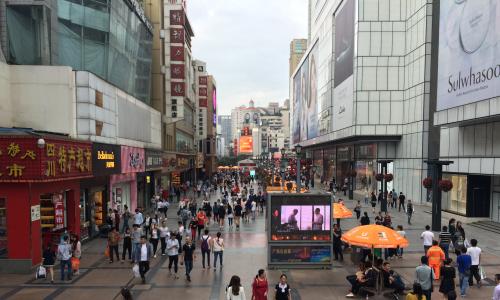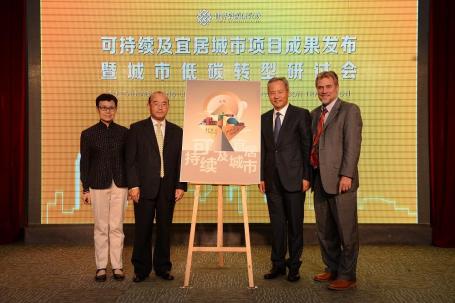
Helping Chinese Cities Lead the Fight Against Climate Change
In the fight to avert runaway climate change, no country is more important than China, and nowhere in China is more important than its booming cities. So it’s good news that some of China’s biggest cities have committed to peak their greenhouse gas (GHG) emissions before China’s national goal of 2030.
A recent visit to China gave me a first-hand look at how my WRI China colleagues are working with partners in Beijing, Chengdu, Qingdao and other cities to advance solutions that cut emissions while improving people's lives.
One purpose of the trip was to participate in the capstone event for the Sustainable and Livable Cities Initiative that WRI China organized to report on the initiative's achievements, thank partners, and express appreciation to the Caterpillar Foundation, which has supported the initiative's work in China, India and Brazil.
The event drew nearly 200 people from government agencies, domestic and international NGOs, universities and companies. Keynote speakers included Sun Zhen, Deputy Director of the Department of Climate Change of National Development Reform Commission, which provided strategic guidance to the initiative, and Caterpillar Inc. Vice President Chen Qihua. WRI China Director Lailai Li gave an overview of WRI's work on the initiative, including the research and tools that WRI provided to help Chinese cities grown more sustainably.

At the capstone event and in subsequent conversations, I learned that WRI China and WRI Ross Center for Sustainable Cities, with the support of Caterpillar Foundation and other donors, are helping Chinese cities cut emissions and improve lives through a variety of activities. Here are three:
- Committing to low-emissions pathways—and following through. When the Sustainable and Livable Cities Initiative began five years ago, many city leaders in China believed that development and rising emissions were inseparable. WRI shared evidence that low-carbon development can create jobs and make cities better places to live. Knowing that cuts in urban emissions were compatible with economic growth may have encouraged the government to include such reductions in the 13th Five Year Plan released early this year. Since then WRI tools and analysis have helped cities to proceed.
- Turning sludge into energy. Sludge-to-energy systems are well-established technology but their potential in China has been little known. WRI research demonstrated showed how such systems in China could reduce solid waste, greenhouse gases and water pollution, and produce organic compost and compressed natural gas – all while saving money. The project, led by Senior Associate Lijin Zhong in China, was named one of WRI’s Top Ten Outcomes in 2015, when four cities were installing or planning sludge-to-energy systems. Since then, China’s Ministry of Housing and Urban-Rural Development has endorsed the idea and encouraged other Chinese cities to follow suit.
- Opening the way for congestion charging. Congestion charging—collecting a fee when a car enters the city center—can reduce traffic, free roads for other transport options, such bicycles and buses, and raise funds to improve public transit, while also cutting emissions. Chinese officials have been reluctant to propose it due to concern about a backlash from the growing number of car owners (six of 10 Beijing households own a car). Supported by CIFF, WRI China staff, having shared research on the advantages of congestion charging with relevant officials, recently went two steps further. First they collaborated with a leading university on a public opinion survey on the approach. Next they worked with a Beijing television station to create a 30-minute program using the survey results to introduce the idea. The program, featuring China Transport Program Director Daizong Liu, aired last week, offering officials a low-risk way to open a public dialogue on the policy.
These and other initiatives in China epitomize WRI’s model for achieving transformational change on a global scale. First we conduct research to understand a problem and identify practical solutions; then we work with partners to test these solutions in the real world; finally, we join with others to disseminate the ideas widely, so decision-makers around the world can adopt and adapt the solution. The Chinese government’s determination (acting on WRI’s suggestion) to set up a Green Certificates trading system for the first time to promote renewable energy development, is yet another example.
In five short years, the Sustainable and Livable Cities Initiative has moved these ideas to the brink of global-scale change. It has also created an appetite for more of what WRI has to offer. In Chengdu, a city of 14 million that has worked closely with WRI China to set ambitious climate goals, including plans for five sludge-to-energy plants, officials and academics who spoke at a seminar marking the conclusion of the first five years of the Initiative voiced a common request: could WRI please offer more detailed suggestions and advice?